Hydroxychloroquine Market Overview
The global hydroxychloroquine market is steadily expanding, driven by rising demand in a variety of industries, including healthcare, pharmaceuticals, and research. This market covers a wide range of hydroxychloroquine formulations, including oral tablets, injectables, and combination therapy. Our paper examines procurement trends in depth, with an emphasis on cost optimization tactics and the use of modern digital tools to expedite procurement and improve operational workflows.
Key prospective concerns in the hydroxychloroquine market include controlling raw material costs, ensuring consistent supply chains, adhering to regulatory requirements, and protecting sensitive health data. The integration of digital procurement systems and strategic sourcing will be important for accelerating hydroxychloroquine uptake and maintaining long-term market competitiveness. As global demand rises, businesses are increasingly turning to market data to boost operational efficiency, reduce supply chain risks, and improve decision-making processes.
Market Size: The global Hydroxychloroquine market is projected to reach USD 2.22 billion by 2035, growing at a CAGR of approximately 26.91% from 2025 to 2035.
Growth Rate: 26.91% 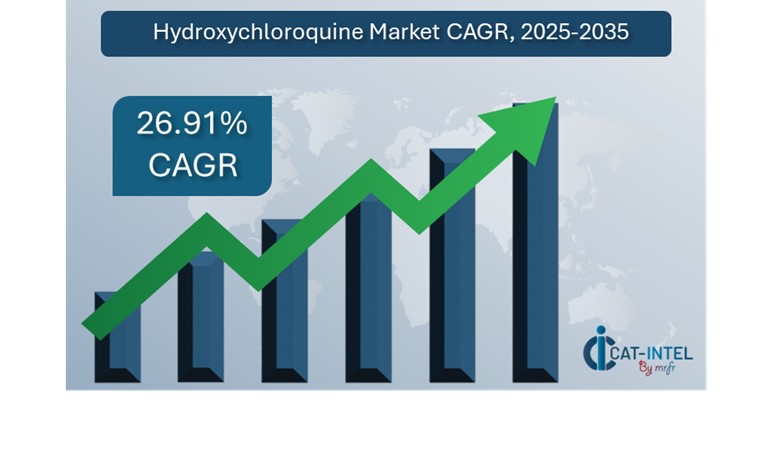
- Sector Contributions: Growth in the market is driven by:
- Demand For Effective Treatment: Effective treatment options are in high demand for controlling chronic diseases including rheumatoid arthritis and lupus, as well as researching prospective cures for developing diseases.
- Drug Delivery System Innovation: New breakthroughs in hydroxychloroquine formulation, such as enhanced oral delivery systems or combination medicines, are propelling the industry forward.
- Technological Advances in Drug Development: The integration of AI, machine learning, and data analytics is accelerating the identification of possible new uses for hydroxychloroquine, hence increasing treatment outcomes.
- Custom Therapeutic Solutions: The increasing desire for personalized treatment is altering how hydroxychloroquine is given, with a greater emphasis on tailored solutions for unique patient needs in diverse therapeutic areas.
- Regional Insights: North America and Asia Pacific are significant actors due to their strong pharmaceutical infrastructure, increasing healthcare investments, and high levels of adoption.
Key Trends and Sustainability Outlook:
- Cloud Integration: Cloud Integration for Drug Development has been implemented in hydroxychloroquine manufacturing to enhance scalability, lower infrastructure costs, and allow remote access.
- Advanced Features: Advanced analytics and digital tools are increasingly being utilized to estimate demand, monitor product performance, and optimise supply networks.
- Scalability Needs: In response to global health problems, pharmaceutical corporations are striving for scalable solutions that can quickly adapt to changing conditions while ensuring continuous supply.
- Sustainability in Production: The pharmaceutical sector is working to reduce the environmental impact of hydroxychloroquine production, which aligns with sustainability aims.
- Data-Driven Research: Advanced analytics and forecasting algorithms are being used to improve research results and optimize the hydroxychloroquine supply chain, from processing to distribution.
Growth Drivers:
- Global Health Needs: The continuous struggle against malaria and COVID-19 is increasing demand for hydroxychloroquine as a vital therapeutic choice in many nations.
- Cost-Effective Healthcare Solutions: The lower cost of hydroxychloroquine compared to other therapies, particularly in developing regions where affordable healthcare solutions are vital.
- Regulatory Compliance: Manufacturing and distribution are influencing organizations to implement systems that ensure compliance and improve market data accuracy.
- Global Supply Chain: Real-time data and smooth process integration are critical for simplifying hydroxychloroquine manufacturing and delivery, particularly as demand varies in anticipation of global health events.
- Sustainability Focus: Hydroxychloroquine manufacturers are implementing sustainable practices to reduce waste, optimize utilization of resources, and fulfil global sustainability targets.
Overview of Market Intelligence Services for the Hydroxychloroquine Market:
Recent evaluations have stressed important problems in the hydroxychloroquine market, including as growing raw material costs and the need to tailor formulations to unique regional needs. Market intelligence studies are critical for finding procurement opportunities, allowing businesses to discover cost-cutting methods, maximize supplier relationships, and improve product development performance. These insights are critical for ensuring compliance with international healthcare laws and sustaining high-quality production processes while effectively controlling costs.
Procurement Intelligence for Hydroxychloroquine: Category Management and Strategic Sourcing
To remain relevant in the hydroxychloroquine market, pharmaceutical companies are fine-tuning procurement methods through rigorous spend analysis and vendor performance monitoring. Effective category management and strategic sourcing are critical for lowering procurement costs and guaranteeing a consistent supply of quality raw materials and production inputs. Businesses can use actionable market intelligence to enhance their procurement strategies and negotiate favourable terms with suppliers, ensuring a consistent, cost-effective supply of hydroxychloroquine. Companies that use strategic procurement procedures can improve their awareness of market trends, detect possible supply chain hazards, and use data to optimize operations.
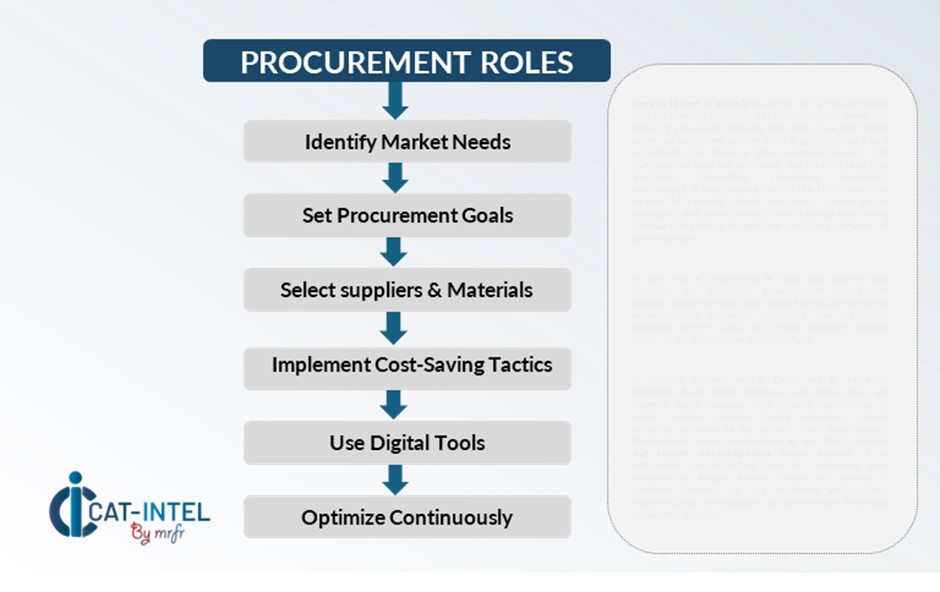
Pricing Outlook for Hydroxychloroquine: Spend Analysis
The price prognosis for hydroxychloroquine is projected to be moderately volatile, with swings affected by several major factors. These include advancements in manufacturing technology, worldwide demand, supply chain bottlenecks, regional pricing disparities, and raw material costs. Furthermore, the rising emphasis on adherence to regulations, quality assurance, and maintaining high manufacturing standards is expected to put higher pressure on hydroxychloroquine prices in the future.
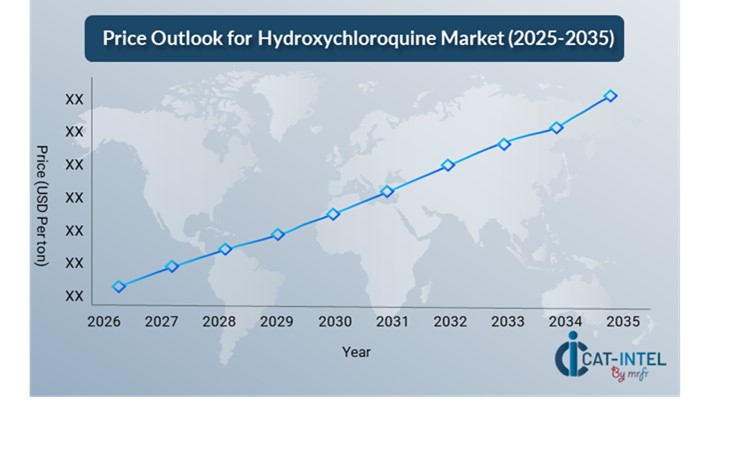
Graph shows general upward trend pricing for Hydroxychloroquine and growing demand. However, there may be fluctuations influenced by economic conditions, technological advancements, and competitive dynamic.
To minimize costs in the hydroxychloroquine industry, it is critical to streamline procurement procedures, improve supplier management, and consider purchasing from several sources to reduce reliance on a single supplier. Using digital technologies for market monitoring, pricing forecasting, and vendor performance tracking can improve cost efficiency while also providing actionable information to help you make better procurement decisions.
Long-term ties with trusted suppliers assure a steady supply of raw materials at low prices. Securing multi-year contracts with suppliers can help to lock in advantageous pricing and defend against raw material price volatility. Subscription-based models and selective procurement from several locations can help to provide a consistent supply of high-quality hydroxychloroquine at a lower cost.
Cost Breakdown for Hydroxychloroquine: Total Cost of Ownership (TCO) and Cost-Saving Opportunities
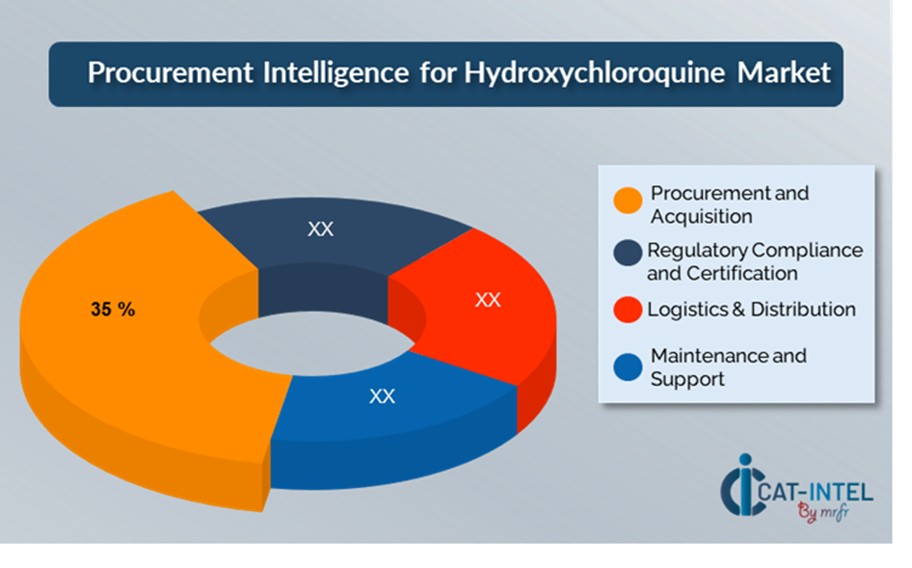
- Procurement and Acquisition: (35%)
- Description: This includes the original cost of hydroxychloroquine from the supplier. It includes the cost per unit or dosage, which differs based on whether the good is branded or generic.
- Trend: Generic hydroxychloroquine has been more widely available, resulting in lower procurement prices. Manufacturers provide bulk purchasing rebates to medical facilities and organizations, which further reduces costs.
- Regulatory Compliance and Certification: (XX%)
- Logistics & Distribution: (XX%)
- Maintenance and Support: (XX%)
Cost-Saving Opportunities: Negotiation Levers and Purchasing Negotiation Strategies
In the hydroxychloroquine market, streamlining procurement processes and using strategic negotiation strategies can result in significant cost savings and increased production and distribution efficiency. Long-term relationships with dependable suppliers, particularly those who provide continuous access to high-quality raw materials and sustainable manufacturing techniques, can result in more attractive price structures and terms, such as volume-driven discounts and bundled service offerings.
Collaborating with suppliers who provide scalable and innovative solutions, such as modern production technologies and sustainability initiatives, not only helps to reduce operational costs but also enhances long-term supply chain reliability. Innovation can also lead to improved hydroxychloroquine formulations and the exploration of more cost-effective production processes. By partnering with suppliers who value technology-driven solutions, cost-efficiency, and long-term sustainability, Companies in the hydroxychloroquine market can ensure a continuous, affordable, and high-quality supply of this essential treatment by partnering with suppliers who prioritize technology-driven solutions, cost-efficiency, and long-term sustainability.

Supply and Demand Overview for Hydroxychloroquine: Demand-Supply Dynamics and Buyer Intelligence for Effective Supplier Relationship Management (SRM)
The hydroxychloroquine market is expanding steadily, owing primarily to rising demand for low-cost, high-quality therapies in a variety of industries, including pharmaceuticals and healthcare. Advances in medication production technologies and worldwide health conditions influence the dynamics of supply and demand in this industry
Demand Factors:
- Global Health Challenges: The continued demand for hydroxychloroquine as a treatment for chronic disorders such as rheumatoid arthritis, lupus, and malaria is driving growing demand in global healthcare systems.
- Cost-Effectiveness in Emerging Markets: Hydroxychloroquine's comparatively low cost compared to newer medicines drives demand in developing countries.
- Regulatory and Safety Requirements: The increased emphasis on regulatory standards in medication manufacture is driving demand for hydroxychloroquine that meets the highest quality and compliance standards.
- Therapeutic Customization Requirements: The desire for hydroxychloroquine formulations that cater to specific populations of patients, such as those with comorbidities or varied medication sensitivities, is driving the demand for customized pharmaceutical solutions.
Supply Factors:
- Technological Advancements: Innovations in medication formulation and manufacturing technologies are improving the efficiency and scalability of hydroxychloroquine production, enabling providers to better fulfil rising demand.
- Vendor Ecosystem: The growing number of suppliers in the hydroxychloroquine industry, which includes both generic medication producers and large pharmaceutical corporations, provides customers with a diverse choice of options while also encouraging pricing and supply competitiveness.
- Global Economic Factors: Exchange rates, labour costs, and geographical variations in drug production technology adoption all have an impact on hydroxychloroquine prices and availability.
- Scalability and Flexibility: Modern hydroxychloroquine suppliers are implementing scalable production processes to accommodate the changing needs of diverse markets and patient populations.
Regional Demand-Supply Outlook: Hydroxychloroquine
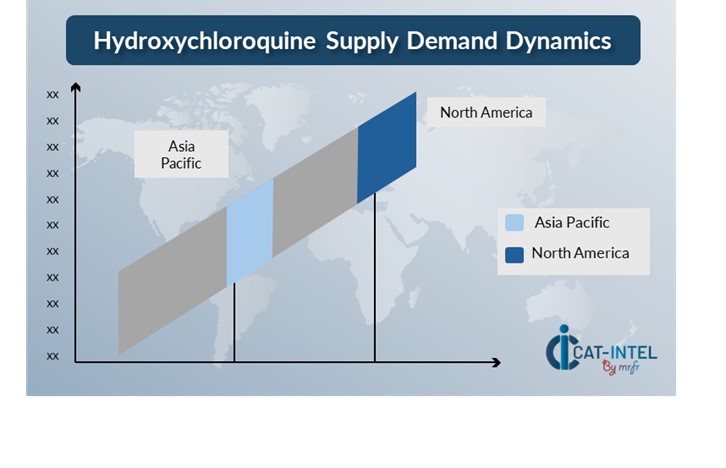
The Image shows growing demand for Hydroxychloroquine in both North America and Asia Pacific, with potential price increases and increased Competition.
North America: Dominance in the Hydroxychloroquine Market
North America, particularly the United States, is a dominant force in the global Hydroxychloroquine market due to several key factors:
- High Pharmaceutical Demand: North America, particularly the United States, has a well-established healthcare system, and hydroxychloroquine is widely used to treat illnesses such as rheumatoid arthritis, lupus, and malaria
- Strong Regulatory Framework: A well-defined regulatory environment promotes product trust and allows for more efficient distribution and use of hydroxychloroquine.
- Generic Medication Industry: The United States and Canada have a strong generic medication industry, making hydroxychloroquine available in low-cost generic formulations.
- Research and Development: Investment: North America is the world leader in pharmaceutical R&D. Major expenditures in the development of new formulations and innovative uses for hydroxychloroquine have resulted in increasing research.
- Advanced Healthcare Infrastructure: Health insurance and access to drugs make it easier for people with chronic conditions to receive consistent treatment, contributing to a higher market share for the drug.
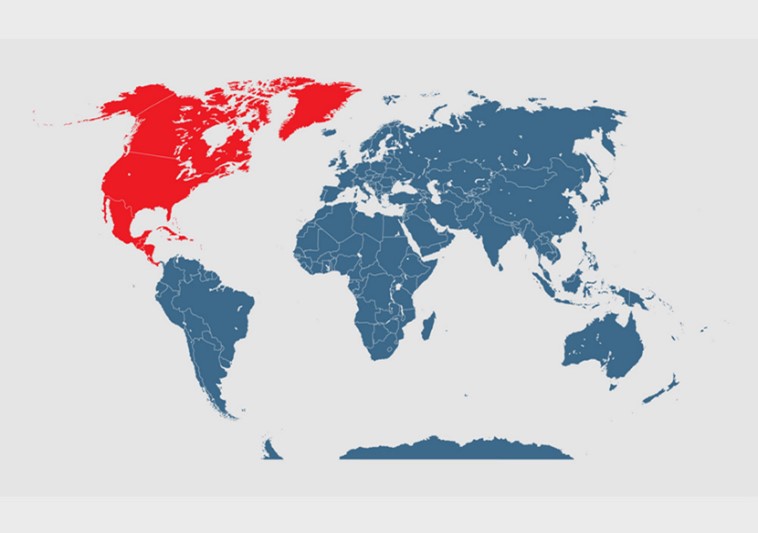
North America Remains a key hub Hydroxychloroquine Price Drivers Innovation and Growth.
Supplier Landscape: Supplier Negotiations and Strategies
The hydroxychloroquine market also has a broad and competitive supplier ecosystem, with global pharmaceutical giants and regional providers influencing industry dynamics. These vendors influence pricing models, product availability, production quality, and regulatory compliance. Large-scale pharmaceutical corporations dominate the market, producing generic hydroxychloroquine, while smaller, regional competitors focus on specific therapeutic applications, economical formulations, or niche markets.
Large multinational pharmaceutical corporations dominate the hydroxychloroquine industry, with extensive distribution networks, strong R&D capabilities, and economies of scale. These firms often sell generic versions of hydroxychloroquine at competitive rates while maintaining high production standards and regulatory compliance in multiple locations. As the global healthcare landscape evolves, hydroxychloroquine suppliers must prioritize regulatory compliance, quality assurance, and supply chain resilience to meet the market's diverse needs, while also innovating to remain competitive and meet the growing demand for affordable and effective treatments.
Key Suppliers in the Hydroxychloroquine Market Include:
- Mylan
- Sanofi
- Novartis
- Teva pharmaceuticals
- Cipla
- Zydus Cadila
- Sun Pharmaceutical Industry
- Lupin pharmaceuticals
- Hikma Pharmaceuticals
- Aurobindo Pharmaceuticals
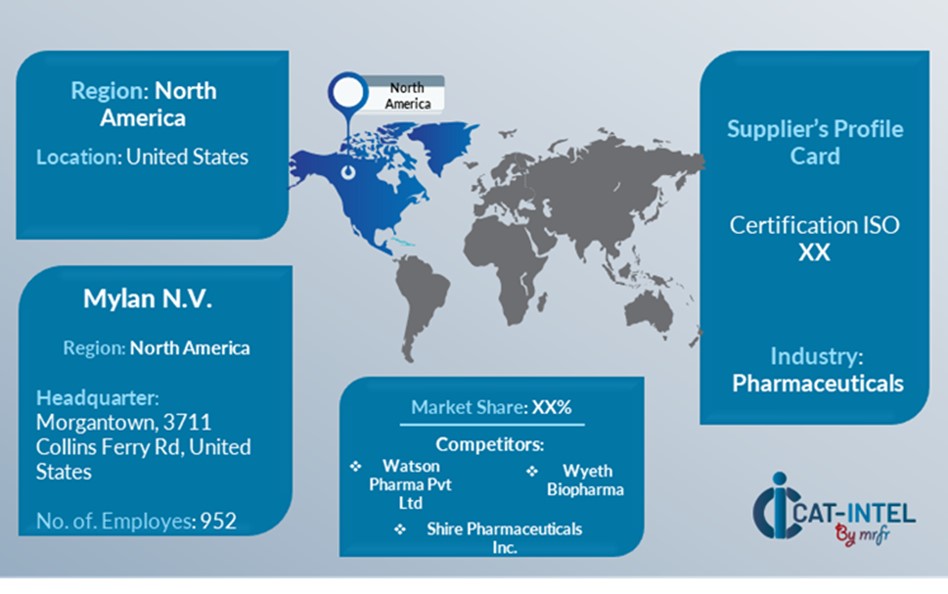
Key Developments Procurement Category Significant Development:
|
Significant Development |
Description |
|
Market Growth |
The hydroxychloroquine market is developing, driven by rising worldwide healthcare demand, particularly for the treatment of chronic diseases including rheumatoid arthritis and lupus, as well as its continuous usage in the fight against malaria and other emergent diseases. |
|
Cloud Adoption |
While cloud-based solutions are transforming many industries, the healthcare sector is also seeing a larger incorporation of cloud technology. These cloud-based tools increase decision-making, drug shipment tracking, and supply chain management efficiency. |
|
Product Innovation |
AI-powered analytics are being used to improve medicine production processes, forecast market demand, and optimize handling of inventory, ensuring the availability of hydroxychloroquine even during times of crisis. |
|
Technological Advancements |
Emerging technologies such as machine learning, IoT integration, and robotic process automation (RPA) are critical to enhancing hydroxychloroquine production, automate repetitive operations in drug manufacture, and increase overall production efficiency. |
|
Global Trade Dynamics |
Tariffs and shifting laws in important areas influence raw material availability and cost, which can have an impact on hydroxychloroquine manufacturing and distribution globally. |
|
Customization Trends |
The demand for personalized hydroxychloroquine formulations and specific treatment alternatives is increasing. As healthcare practitioners focus more on personalized treatment, corporations are looking into specialized solutions depending on patient needs, such as altering dosages and formulations. |
|
Hydroxychloroquine Attribute/Metric |
Details |
|
Market Sizing |
The global Hydroxychloroquine market is projected to reach USD 2.22 billion by 2035, growing at a CAGR of approximately 26.91% from 2025 to 2035. |
|
Hydroxychloroquine Technology Adoption Rate |
Approximately 55% of global healthcare practitioners use hydroxychloroquine in their treatment protocols for disorders like rheumatoid arthritis, lupus, and malaria. |
|
Top Hydroxychloroquine Industry Strategies for 2025 |
Top Hydroxychloroquine Market Strategies for 2024Key tactics include investing in innovative medicine formulations, increasing bioavailability, and expanding generic production in emerging markets. |
|
Hydroxychloroquine Process Automation |
Approximately 60% of hydroxychloroquine production now uses automated manufacturing procedures to improve efficiency and reduce output costs. |
|
Hydroxychloroquine Process Challenges |
Major challenges include raw material price instability, regulatory constraints, manufacturing scalability, and guaranteeing quality control in mass production. |
|
Key Suppliers |
Novartis, Teva Pharmaceuticals, and Mylan Pharmaceuticals are among the leading manufacturers of hydroxychloroquine, with generic medication businesses also making substantial contributions. |
|
Key Regions Covered |
North America, Europe, and Asia-Pacific are the most popular locations for hydroxychloroquine use, with India, China, and Latin America seeing high demand due to malaria prevalence and low cost in chronic illness treatments. |
|
Market Drivers and Trends |
Growth is being driven by rising demand for low-cost therapies, government healthcare programs, generic medication production, and expanding pandemic therapy use. Improved AI and data analytics in medicine manufacturing boost supply chain efficiency and treatment outcomes. |
Frequently Asked Questions (FAQ):
Our procurement intelligence services offer a comprehensive analysis of the hydroxychloroquine supplier landscape, identifying major manufacturers and evaluating market trends. We provide spend analysis, supplier evaluations, and sourcing strategies to help secure high-quality hydroxychloroquine at competitive prices.
We assist in evaluating the TCO for hydroxychloroquine by accounting for factors such as raw material costs, production and packaging expenses, shipping fees, regulatory compliance costs, and distributor margins.
Our risk management services address challenges such as raw material price fluctuations, regulatory compliance risks, supply chain disruptions, and quality control issues. These strategies help mitigate risks, ensure consistent product availability, and safeguard against price volatility in the hydroxychloroquine market.
Our Supplier Relationship Management (SRM) services focus on fostering strong partnerships with hydroxychloroquine manufacturers and distributors. We assist in contract negotiations, monitor supplier performance, and ensure the integration of their products into your healthcare supply chain effectively.
We recommend best practices such as vendor segmentation, market analysis, quality audits, and supply chain monitoring. These practices ensure that you select reliable suppliers, maintain consistent supply levels, and minimize the risk of shortages or product quality issues.
Digital tools help streamline hydroxychloroquine procurement by automating vendor selection, improving supply chain visibility, and optimizing inventory management.
Supplier performance management services evaluate key metrics such as product quality, delivery timeliness, regulatory compliance, and cost-effectiveness.
We support negotiations by leveraging market insights, supplier benchmarking, and contract strategies such as bulk purchase agreements, long-term contracts, and flexible payment terms.
We provide tools that offer detailed insights into raw material trends, supplier capabilities, and pricing forecasts for hydroxychloroquine. These resources enable data-driven decision-making and help optimize your procurement strategy to ensure cost-effective sourcing and reliable supply.
We assist in ensuring that hydroxychloroquine suppliers meet regulatory requirements and adhere to industry standards related to drug safety, quality control, and data privacy.
We recommend diversifying suppliers, establishing contingency plans, and leveraging cloud-based supply chain solutions to enhance visibility and adaptability in your hydroxychloroquine procurement process.
Our tracking solutions monitor delivery accuracy, product quality, and supplier responsiveness over time, helping evaluate the reliability of hydroxychloroquine suppliers. This performance data informs future sourcing decisions and ensures long-term supplier reliability.
We identify suppliers focusing on sustainable sourcing of raw materials, eco-friendly manufacturing processes, and energy-efficient packaging. By partnering with such suppliers, you can align hydroxychloroquine procurement with your organization’s sustainability goals.
Our pricing analysis compares supplier rates, tracks raw material costs, and assesses global supply dynamics to identify competitive pricing trends. We also apply strategic negotiation techniques and long-term contracts to ensure cost-effective procurement of hydroxychloroquine without compromising quality.
We assist in ensuring the quality and safety of hydroxychloroquine by conducting rigorous supplier audits, quality control checks, and regulatory compliance assessments. We also recommend partnering with suppliers who adhere to Good Manufacturing Practices (GMP) and hold relevant certifications.








